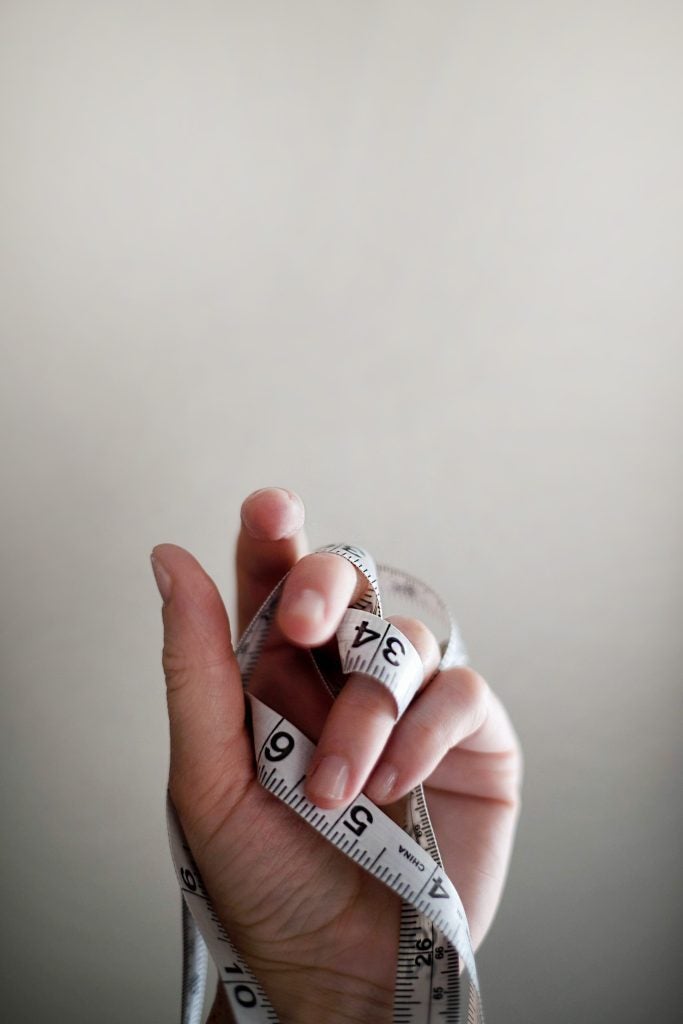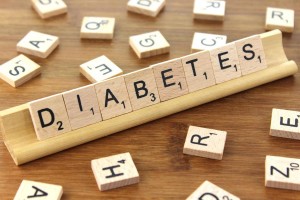
Diabulimia is an eating disorder in which patients with Type 1 diabetes deliberately skip and/or restrict their intake of insulin in order to cause extreme weight loss, and many patients often supplement this activity with bulimic behaviors. Bulimia is an eating disorder that involves binge eating followed by a compensatory behavior, such as vomiting or strenuous exercise. The term “Diabulimia” was coined by the media and is not used by medical professionals. Endocrinologists use the term “ED-DMT1,” which stands for Eating Disorder-Diabetes Mellitus Type 1.1 ED-DMT1 refers to any eating disorder that is present in people who have Type 1 diabetes.
Table of Contents
Who is Susceptible?
People who are diagnosed with Type 1 diabetes can be susceptible to diabulimia at any age.2 These individuals are classified as being at a higher risk of disordered eating habits, such as diabulimia, because the foundation of diabetes treatment revolves around a focus on food and controlling the consumption of it.2 After cycles of restraining food intake followed by overeating, a diabetic person may develop diabulimia to compensate for the food that they have compulsively consumed.
People with Type 2 diabetes cannot develop diabulimia.3 Even though both Type 1 and 2 diabetics take insulin, Type 2 diabetics will not experience the same physical effects of restricting the intake of insulin as a Type 1 diabetic would. While people with Type 2 diabetes cannot develop diabulimia, they can still develop other eating disorders.3
Type 1 diabetics are the only people with diabetes who can be diagnosed with diabulimia because they are born with the inability to produce enough insulin for their bodies to function properly. When the body does not have the right amount of insulin to break down sugars and create energy for itself, the body feeds off of its own muscle, fat, and organs instead.4
While both males and females can develop eating disorders, young females are typically the most susceptible, especially those with a history of dieting and restrictive eating, weight loss/gain cycles, low self-esteem, and familial struggles.1 Females with Type 1 diabetes have nearly two and a half times the risk of developing an eating disorder.2 Since the diagnosis of diabulimia is fairly new, there has not been a broad enough study to include males with Type 1 diabetes. While it is known that 1 out of 10 people with eating disorders are male, there is not enough data to make any conclusions on how those statistics relate to diabetes.2
Causes
Diabetes treatment methods put an emphasis on metabolism and making sure the patient’s diet has the correct balance of specific foods and nutrients. Because of their constant supervision over their food consumption, people with Type 1 diabetes can be prone to body image issues and the desire to lose weight.2 Living with a chronic illness such as diabetes can make a person susceptible to many psychological challenges. Because diabetics are often required to have an extremely vigilant focus on food intake and need to take insulin (which can cause weight gain), they are at a higher risk of developing an eating disorder.2
Certain behaviors, such as self-critical thoughts, a preoccupation with food, and obsessive counting of calories and carbohydrate intake, may also cause an individual to develop an eating disorder.1 These causes can create obsessive habits revolving around food and are warning signs of developing disordered eating.
Symptoms & Health Risks
The symptoms of diabulimia are similar to other eating disorders. There are both physical symptoms and behavioral/emotional symptoms. The warning signs of diabulimia, however, may be difficult to identify because they are the same symptoms found in an early diabetes diagnosis. These visual and behavioral symptoms can serve as warning signs for friends or family members of the diabetic person.2
The following are the physical warning signs and symptoms of diabulimia: 1,2
- Rapid or unexplained weight loss with normal or heavy eating
- A high blood sugar levels
- Constant bouts of nausea and/or vomiting
- Persistent thirst and frequent urination
- Irregular menstruation or lack of menstruation
- Increased fatigue
- Frequent bladder or yeast infections
- Pale appearance of skin and dry skin
- Dull and thin hair
- Sunken facial appearance
- Abdominal pain
- Constipation
- Dizziness and fainting
Mental and behavioral warning signs often revolve around a person’s self-esteem. Some common signs include: 2

- Self-critical thoughts
- Obsessive counting of calories and carbohydrate intake
- Consistent use of the bathroom right after eating
- Obsessing over diet magazines and food-related media
- Increasing neglect of diabetes management
- Avoiding diabetes related appointments
- Fear that insulin causes weight gain
- Extreme increase or decrease in food intake
- Extreme anxiety about body image
- Restricting certain food or food groups to lower insulin dosages
- Avoiding eating with family or in public
- Overly strict food rules
- Preoccupation with food, weight and/or calories
- Excessive and/or rigid exercise
- Withdrawal from friends and/or family activities
- Depression and/or anxiety
- Infrequently filled prescriptions
Many of the symptoms listed above are common in other eating disorders, such as anorexia or bulimia. The difference is that people with diabulimia also abuse their insulin to lose weight.
Health Risks
There are long-term and short-term health risks associated with diabulimia, and most of the issues that can occur are caused by an increase in blood sugar levels. The short-term risks of restricting insulin are: 1
- Slow wound healing due to a decrease in blood circulation
- Staph and bacterial infections
- Muscle atrophy
- Menstrual disruption
- Dehydration
- Diabetic Ketoacidosis
When a Type 1 diabetic restricts insulin, it can cause diabetic ketoacidosis (DKA).1 This condition occurs because glucose is unable to be processed without insulin. When the body lacks the appropriate amount of insulin, it breaks down fat to produce energy in the form of ketones. Ketones are acidic chemicals, and an excess of them can be poisonous in the bloodstream. When they are in extreme excess, the ketones may leave the body in urine, which involves major water (and therefore weight) loss.5 Unfortunately, this is often misinterpreted as fat loss and may therefore lead a person with diabulimia to continue restricting their insulin use.5 Rapid weight loss and ketoacidosis can have serious long-term complications. A warning sign not mentioned above is recurrent diabetic ketoacidosis episodes without any explainable cause.
The combination of weight loss and repeated diabetic ketoacidosis episodes may increase the risk of: 2
- Retinopathy — black spots that impede vision; can lead to blindness
- Macular edema — the swelling of the eyeball due to excessive fluid
- Peripheral neuropathy — numbness in the limbs
- Gastroparesis — nerve damage in the stomach that slows digestion
- Vasovagal syncope — results in abnormal stress response
- Chronic diarrhea or constipation — due to nerve damage in the colon
- Kidney disease — kidneys need to work harder to process high blood sugar
- Liver disease — fat accumulates in the liver due to insulin restriction
- Heart disease — high cholesterol hardens the arteries
All of the long-term risks of diabulimia listed above can cause coma, stroke, and/or death; however, they are all avoidable with proper treatment.1
Treatment and Prevention

Early treatment for any eating disorder is crucial because the longer it continues, the more difficult it is to treat.6 Treatment for diabulimia is especially tricky because it requires a multifaceted approach: the doctor must address both the diabetes and the eating disorder. Because the treatment for diabetes involves careful intake of calories, carbohydrates, fats, and sodium, the treatment for diabulimia can contradict the mindset necessary for a diabetic lifestyle.7 Disordered eating habits are broken by relabeling foods as neither “good” nor “bad” in order to eliminate guilt.8 Due to this complication, treating diabulimia often requires the effort of a psychiatrist and an endocrinologist simultaneously and may also include family involvement, especially if the patient struggling is a child. In the short term, the surrounding family members should aim to gain a shared understanding of the difficulties of the individual struggling with diabulimia in a non-judgmental way. Re-establishing regular insulin maintenance and reducing episodes of diet restriction should be done in short term, incremental steps. In the long term, it is key to help the individual accept diabetes as a lifelong condition in order to find healthier ways of coping. Initiating a dialogue with empathy and without blame will likely aid in the psychological treatment of the individual with an eating disorder.
Sex & Diabulimia
A low body weight due to forceful reduction of insulin and poor nutrition has a direct impact on sex hormones. For females, having less fat decreases estrogen, an important sex hormone, and also decreases ovarian activity, which therefore decreases the testosterone production that is vital to libido.7 There is not a lot of data on males affected with diabulimia as it is and unfortunately there have been no studies on the specific effects of the disorder on the male sex life. Diabulimia directly affects sexual functioning and can cause not only physical but emotional distress as well. For a healthy sex life, development of a positive body image, acceptance of diabetes as a medical condition, and comfortable relationships with partners may be an important part of sexual and relational recovery.
Concluding Remarks

In comparison with other eating disorders, diabulimia does not get as much recognition or media attention. Regardless, the consequences and health complications are very real and should be taken seriously. While diabulimia can be dangerous, treatment and proper intake of insulin can help to prevent the negative effects of the condition.
Are you or someone you know struggling with Diabulimia?
Call 1-800-931-2237, the National Eating Disorder Association for more information on how to help yourself or a loved one.
References
- “Diabulimia.” National Eating Disorders Association, NEDA, 21 Feb. 2018.
- “What Is Diabulimia?” Beyond Type 1, 29 Jan. 2020.
- “Diabulimia and Diabetes.” Diabetes UK, The British Diabetic Association.
- Larbi, Miranda. “Diabulimia – the ‘Most Dangerous Eating Disorder’ Most of Us Have Never Heard Of.” Metro, Metro.co.uk, 12 Dec. 2019.
- Callum, Audrey, and Lori Lewis. “Diabulimia among Adolescents and Young Adults with Type 1 Diabetes.” Clinical Nursing Studies 2.4 (2014).
- Philpot, Ursula. “Eating Disorders in Young People with Diabetes: Development, Diagnosis and Management.” Journal of Diabetes Nursing 17 (2013).
- Scheel, Judy. “Sexual Satisfaction and Eating Disorders.” Psychology Today. Sussex Pubishers, n.d. Web. 29 Feb. 2016.
- Rabin, Roni. “An Eating Disorder in People With Diabetes.” The New York Times. 1 Feb. 2016. Web.
Last Updated: May 2020
